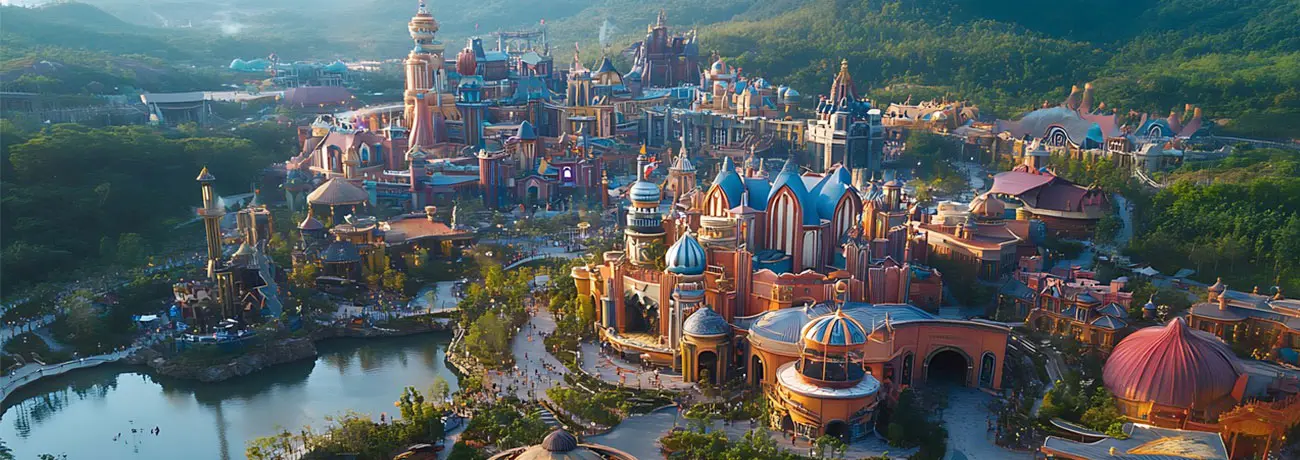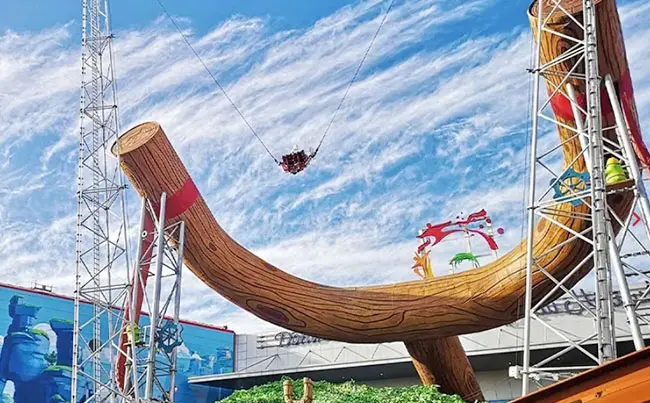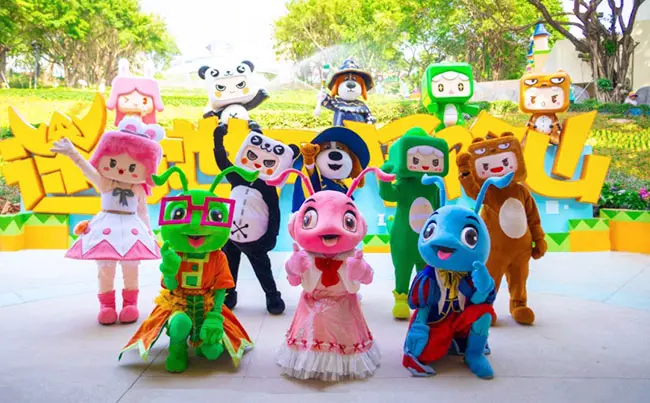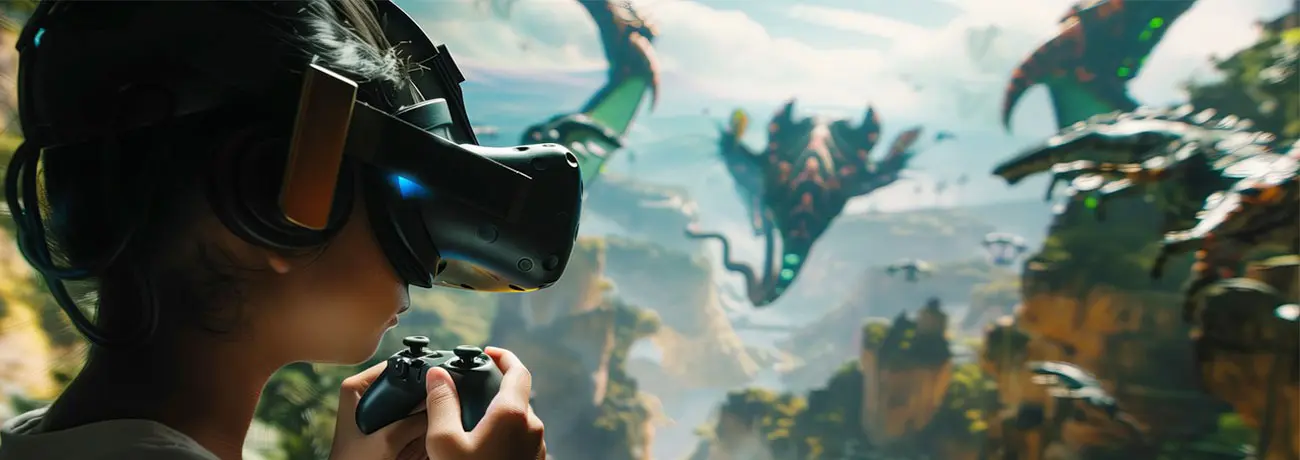For decades, theme parks have transported us to worlds of fantasy, adventure, and beloved stories, primarily drawn from film and literature. But a seismic shift is reshaping the themed entertainment landscape: the explosive integration of iconic video game intellectual properties into the physical realm of theme parks. This isn’t just about slapping a game character on a roller coaster; it’s a sophisticated fusion unlocking unprecedented levels of immersion, engagement, and nostalgia, fundamentally changing how we interact with these digital universes.
Why Game IPs Are the Perfect Park Fit?
Video games possess unique qualities that make them ideal candidates for theme park translation:

Inherent Immersive Sense
Unlike passive film viewing, games demand participation. Players inhabit characters, explore complicated worlds, make choices, and overcome challenges. This built-in desire for agency translates perfectly into immersive park experiences. Parks leverage this by making guests feel like active protagonists, not mere observers.
Vast Explorable Background
Games, especially 3D games, like The Legend of Zelda, Minecraft, offer rich, detailed settings ripe for physical realization. These are not just backdrops but integral parts of the narrative, providing endless inspiration for themed lands, attractions, and atmosphere.
Deep Fandom
Gamers form incredibly strong, personal bonds with franchises cultivated over years or even decades. When the real game scene appears in front of eyes, players will unconsciously put themselves into it. Parks tap into this deep-seated connection, offering a pilgrimage site for devoted fans.
Diverse Gameplay Mechanics
Game mechanics, such as solving puzzles, kart racing, first-person shooting, or even resource gathering and crafting, provide direct blueprints for innovative ride systems and interactive attractions. This variety of game mechanisms can form an overall movement line with tasks as the core, connecting the arrangement and layout of the entire theme park rides.
Built-in Interactivity
Modern game design heavily emphasizes interactivity and a sense of progression such as leveling up, unlocking items, completing quests. Parks are adopting these principles through wearable technology, interactive queues, gamified experiences within lands, and loyalty systems that reward exploration and achievement.
Shallow Integration: Game Scene and Offline Linkage

Game Scene Design
Many game scene designs will construct levels or story backgrounds with amusement parks as the background. These designs are often remodeled based on real scenarios. Some games with more narrative texts often provide detailed text descriptions of the amusement park scene. For example, in otome games, the playground such as carousel is often set as an important scene for the protagonist's emotional development.

Offline Linkage
Game manufacturers will also choose some theme parks for offline joint activities. This marketing method can not only narrow the distance with players, but also expand the popularity of the game and the amusement park in both directions, achieving the effect of breaking the dimensional wall. This type of offline linkage activity is usually time-limited, lasts for a short period of time, and the linkage form is relatively uncomplicated, usually just simple decoration.
Deep Integration of Entertainment, Performance and Consumption
Some large-scale game IPs received very enthusiastic responses after trying simple offline joint activities. Therefore, they will seek further cooperation with the amusement industry to create an IP theme park. This integration is larger in scale, longer in duration and more profound in impact. In particular, it is reflected in the following three aspects:

Limited-Edition Entertainment
The most attractive thing about a theme park is its amusement rides. As an IP theme park, designers will spend a lot of time on the design and construction for rides to make them representative and themed. From appearance design, color matching, and even running track, the game’s own story line will be totally integrated to enhance the passenger experience. For example, in Angry Birds Worlds in Doha, the most representative one is super slingshot. The iconic of slingshot is how the Angry Birds get around Bird Island to reach 60 meters high.
Storytelling Performance
Different from the performances in traditional amusement parks, game IP performances emphasize the narrative of story. In addition to regular singing and dancing actors, these performances will also select cosers and motion capture actors to join in to achieve real-time interaction with tourists. For example, float parade adopts the mode of scenic scene + theme costumes + game character stage play + cosers interactions to greatly enhances the participation and immersion of theme amusement.


Co-branded Product Consumption
Consumption scenarios can serve as an offline extension of the gaming economy. The main secondary consumption points are:
- Catering: Bundling co-branded food and beverages with in-game props can stimulate the consumption desire of tourists and players, which not only satisfies the tourists’ appetite but also enhances their gaming experience.
- Peripheral Products: As one of the hottest consumption points of Generation Z, the peripheral products of game IP are a special “limited edition product” that will be sought after and purchased by players once they are released. As theme park limited products, they can also bring a lot of revenue to the park.
Technology Deepens Integration of Games and Theme Parks
Technology is the crucial power-up enabling this revolution:
Augmented (AR) & Mixed Reality (MR)
Virtual Reality (VR)
Advanced Projection Mapping & Screen Integration
Interactive Wearables
Haptic Feedback & Sensory Tech
Challenges Faced by Game IP Theme Park Integration Projects
As the industry continues to develop, IP integration projects also face multiple challenges:

Low Device Compatibility
Device compatibility is a long-term bottleneck in project operations. Some tourists expressed regret that they could not get the full experience due to AR device issues.
IP Popularity Fluctuations
Fluctuating popularity of game IPs brings uncertain risks. The device usage rate of an once popular large-scale games has dropped sharply after they became outdated.
Traditional Difficult-to-transform Rides
Some classic rides, such as wooden roller coasters, are difficult to introduce mainstream special effects equipment due to low technical compatibility, and are in a dilemma of transformation and upgrading.
Non-interoperable Data Systems
Data barriers affect tourists’ in-depth experience. Whether tourists' game data information can be officially authorized and whether their data can be read and used again are issues that still need to be discussed.
Future Integration Development Direction of Game IPs and Theme Parks
Fueled by guest demand and technological advancements, the integration is accelerating:

Diverse IP Roster
Mature series games, large-world-view games, and independent strong-visual-image games will become popular in the amusement industry. These games will also be completely “at your fingertips”.
Hyper-Personalization
AI could tailor experiences in real-time based on a guest’s gaming data or preferences. Difficulty levels, storyline paths, or character interactions could dynamically adjust.
Tech Convergence
Blending AR, MR, physical sets, haptics, and even subtle scent cannons to create truly multi-sensory experiences indistinguishable from the digital world. Even full-body motion tracking could use for more interactive, physically demanding attractions.
E-Sports Integration
Dedicated arenas within parks hosting professional tournaments or offering guest participation in competitive game experiences using large-scale tech. The park with indoor playground equipment can even further develop a dual business + e-sports operation model to increase revenue.
Free Location-Based VR
Combining large-scale physical arenas with unfettered, high-fidelity VR headsets to create truly unrestricted exploration of digital game worlds. It would transform the entire park into a gaming space, completely breaking the boundaries of virtual reality.
Inevitable Trend of Game IPs and Theme Parks
Looking ahead, the cross-border integration of gaming and amusement industries is an inevitable trend. When gaming symbols resonate with the steel framework, and when virtual passions burst forth in three-dimensional space, the boundaries of dimensions are quietly reshaped. The cross-dimensional fusion is constantly creating new possibilities, where virtual fantasy and real experience are closely intertwined—welcome to the era of a brand new amusement experience! Partner with Beston Rides to start your new entertainment era!

